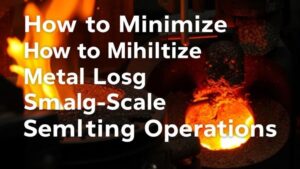Constructing Stamping Mills for Ore Crushing Using Agricola’s Blueprints
Constructing Stamping Mills for Ore Crushing Using Agricola’s Blueprints
Stamping mills, an integral component of ore processing, have been historically pivotal in the mining industry. The foundational blueprints of these mills can trace back to the works of Georgius Agricola, a key figure in mining literature during the Renaissance. This article explores the construction of stamping mills for ore crushing as derived from Agricola’s principles, emphasizing their design specifications, operational mechanics, and historical relevance.
Agricolas Contribution to Mining Technology
Georgius Agricolas seminal work, De Re Metallica, published in 1556, serves as a cornerstone for modern mining practices. His detailed illustrations and descriptions of mining techniques provide insight into the technology of his era, including the operation of stamping mills. Agricolas blueprints included designs for water-powered mechanisms and mills capable of processing ores efficiently.
In his writings, Agricola emphasized the importance of machinery in enhancing ore extraction processes. For example, he detailed the use of water to drive the mechanical movements of stamping mills, which crushed ore into finer particles to facilitate material separation.
Understanding Stamping Mills
Stamping mills, also known as stamp mills, operate based on a simple yet effective principle. use heavy metal stamps that drop repeatedly onto ore to break it apart. This process has various stages, including crushing, grinding, and separation of valuable minerals from unwanted materials.
- Crushing: The initial stage where large ore chunks are reduced to smaller pieces.
- Grinding: Involves further size reduction to facilitate mineral extraction.
- Separation: Uses methods such as amalgamation with mercury for precious metals or flotation for sulfide ores.
Mill Construction Techniques
Building a stamping mill requires careful planning and execution. Here, we will outline the essential components and materials typically involved in constructing these mills based on Agricola’s designs.
Materials
Key materials used in the construction of stamping mills include:
- Timber: Used for the framework and support structures. Strong hardwoods like oak are preferred for durability.
- Metallic Components: Steel or iron for the stamps and other moving parts to withstand wear and tear.
- Water Wheels: Often constructed from wood, these wheels harness energy from flowing water to power the mill.
Construction Steps
The construction of a stamping mill typically involves the following steps:
- Design planning based on Agricolas blueprints.
- Clearing and leveling the site for stability.
- Building the support framework using timber.
- Installing the water wheel and connecting it to the stamping mechanism.
- Assembling the stamping units and ensuring alignment for efficient operation.
Real-World Applications
While modern technologies have evolved significantly, the principles derived from Agricolas designs still resonate within contemporary mining practices. For example, many small-scale mining operations around the world utilize simplified versions of stamping mills for ore processing. The revival of interest in artisanal mining techniques has led to the adaptation of Agricola’s methods to local contexts, particularly in developing countries.
Also, these historical designs can inspire innovations in sustainable mining practices, where the focus is on minimizing environmental impact while maximizing efficiency.
Conclusion
Studying the construction and operation of stamping mills using Agricolas blueprints offers not only a glimpse into the mining technology of the past but also practical lessons applicable to modern ore processing techniques. By embracing these foundational principles, stakeholders in the mining sector can better understand the evolution of technology and make informed decisions about future advancements.
In closing, whether you are a historian, engineer, or mining professional, the legacy of Agricolas work continues to inform contemporary practices and innovations in ore processing.


